Light is everything in the ocean. If you take down a strobe, you uncork that bottle of sunlight, push the trigger of the camera, the reef explodes with light. You see colors that have never really been seen before. They have an extraordinary palette, colors you can’t even imagine.
David Doubilet was born and raised in New York City. His father was a physician who became a professor of surgery at New York University. At age eight, David, an asthmatic child who at first had little interest in the outdoors, discovered the joy of underwater exploration while attending summer camp on a freshwater lake in the Adirondack Mountains.
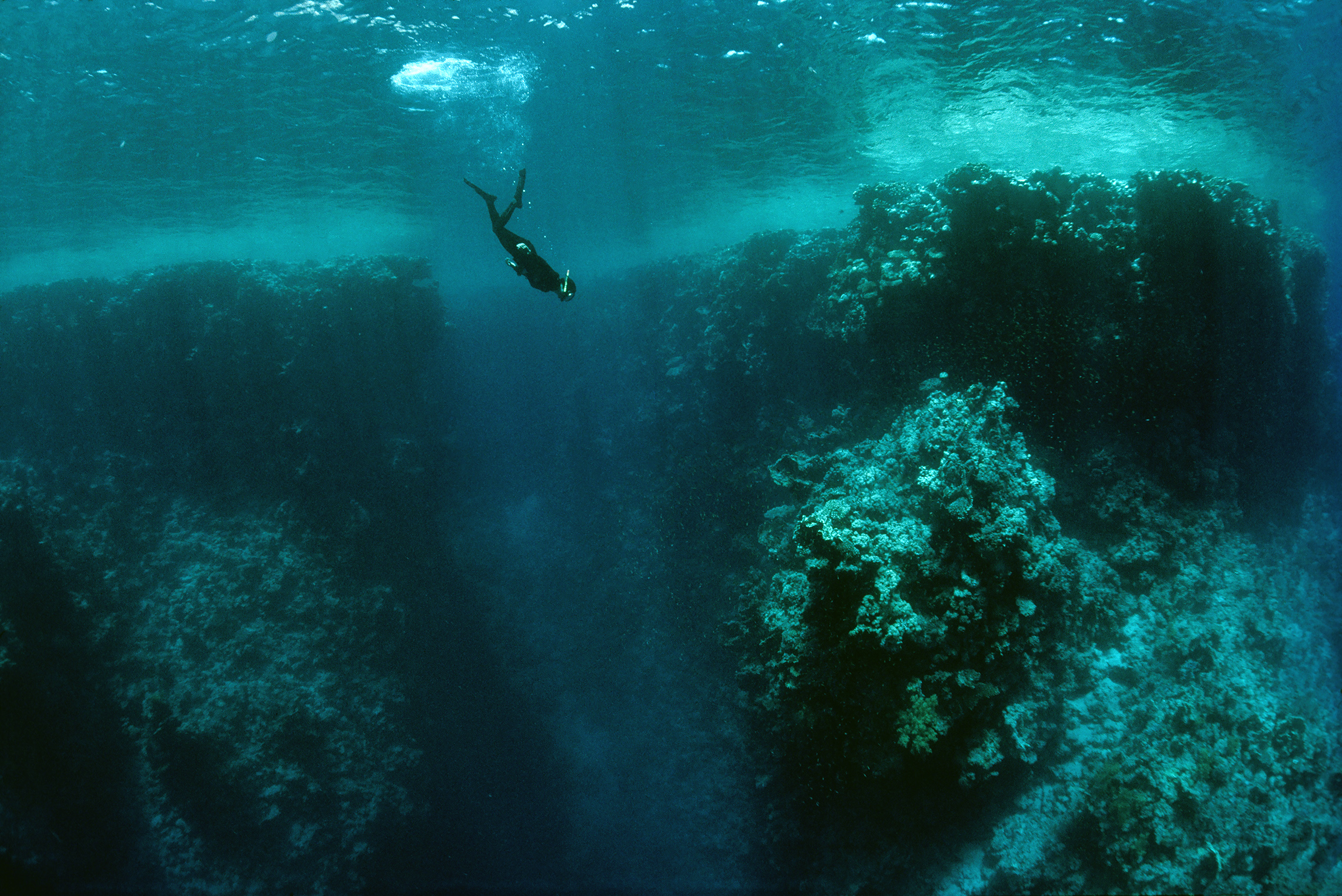
Growing up in New York City, he had fewer opportunities to explore his passion during the year, but his family spent summers at their seaside home in Elberon, New Jersey, where he took up snorkeling. At age 12, he began taking pictures above and below the water, wrapping his camera in a plastic anesthesiologist’s bag given him by his physician father.
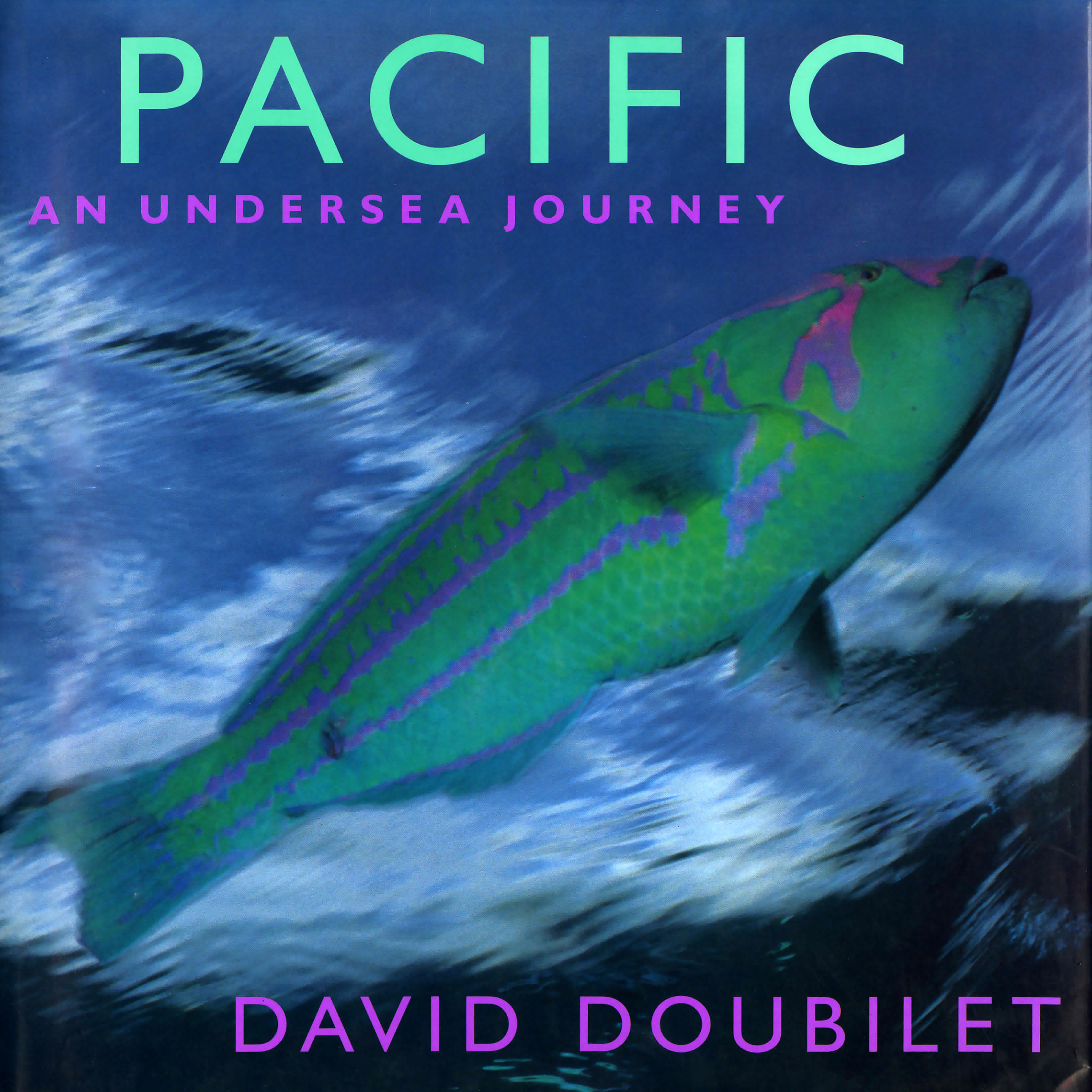
His father encouraged him in other ways, taking him along on a fishing trip to Andros Island in the Bahamas, where David learned to dive with scuba gear. In his teens, David began working at the island’s Small Hope Lodge and would return every summer through his college years as a diving instructor, taking undersea pictures in his spare time. Back on the mainland, he worked part-time as a diver and photographer for the Sandy Hook Marine Laboratory.
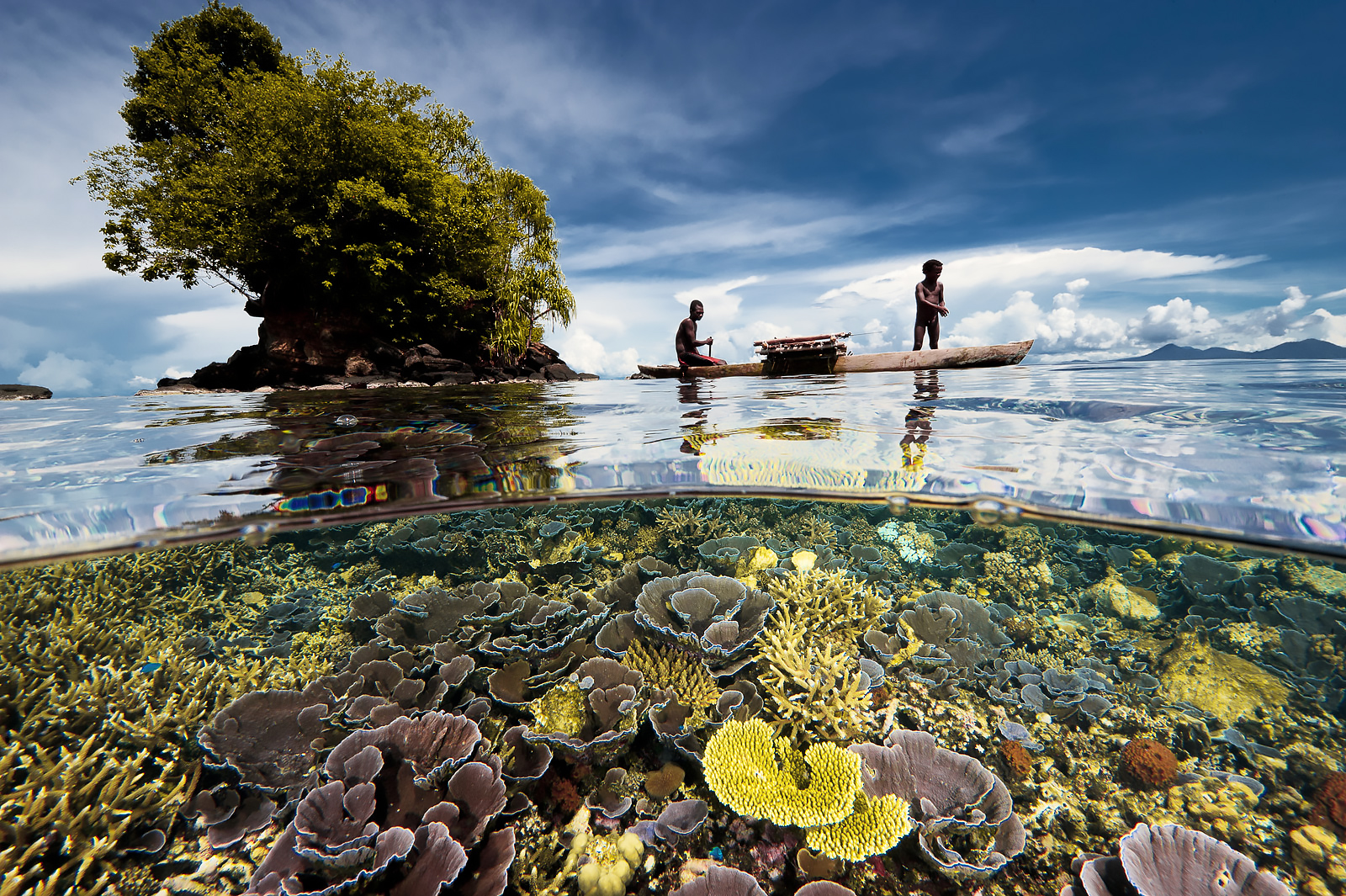
He entertained thoughts of becoming a marine biologist, but when he entered Boston University, in Autumn 1965, he soon gravitated toward film and broadcasting studies. Over the summer following freshman year, he attended a pilot course in underwater photography at the Brooks Institute of Photography in Santa Barbara, California. Bored with his first efforts at motion photography, by the time he graduated in 1970, David Doubilet was firmly set on a career as a still photographer.
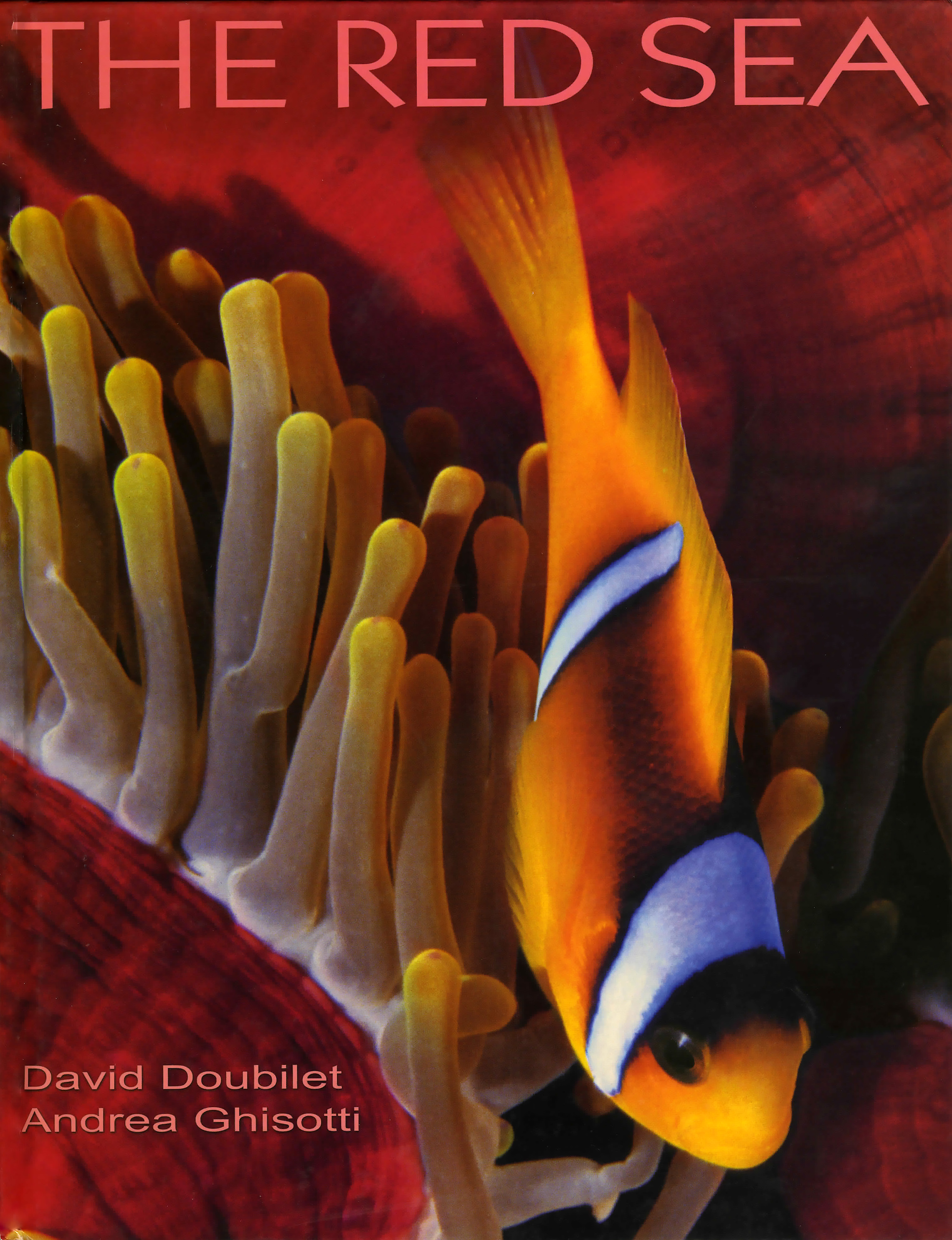
The following year, Doubilet traveled to Israel, where he photographed the garden eels of the Red Sea. The resulting photographs were published in National Geographic in 1972. It was the beginning of a relationship that has lasted over 40 years. In 1976, he became a contract photographer for the magazine. His work appears in its pages multiple times each year, carrying his byline as photographer, and in recent years, as the author of articles. He has returned many times to the Red Sea, a location he calls his “favorite underwater studio,” producing nearly a dozen stories.
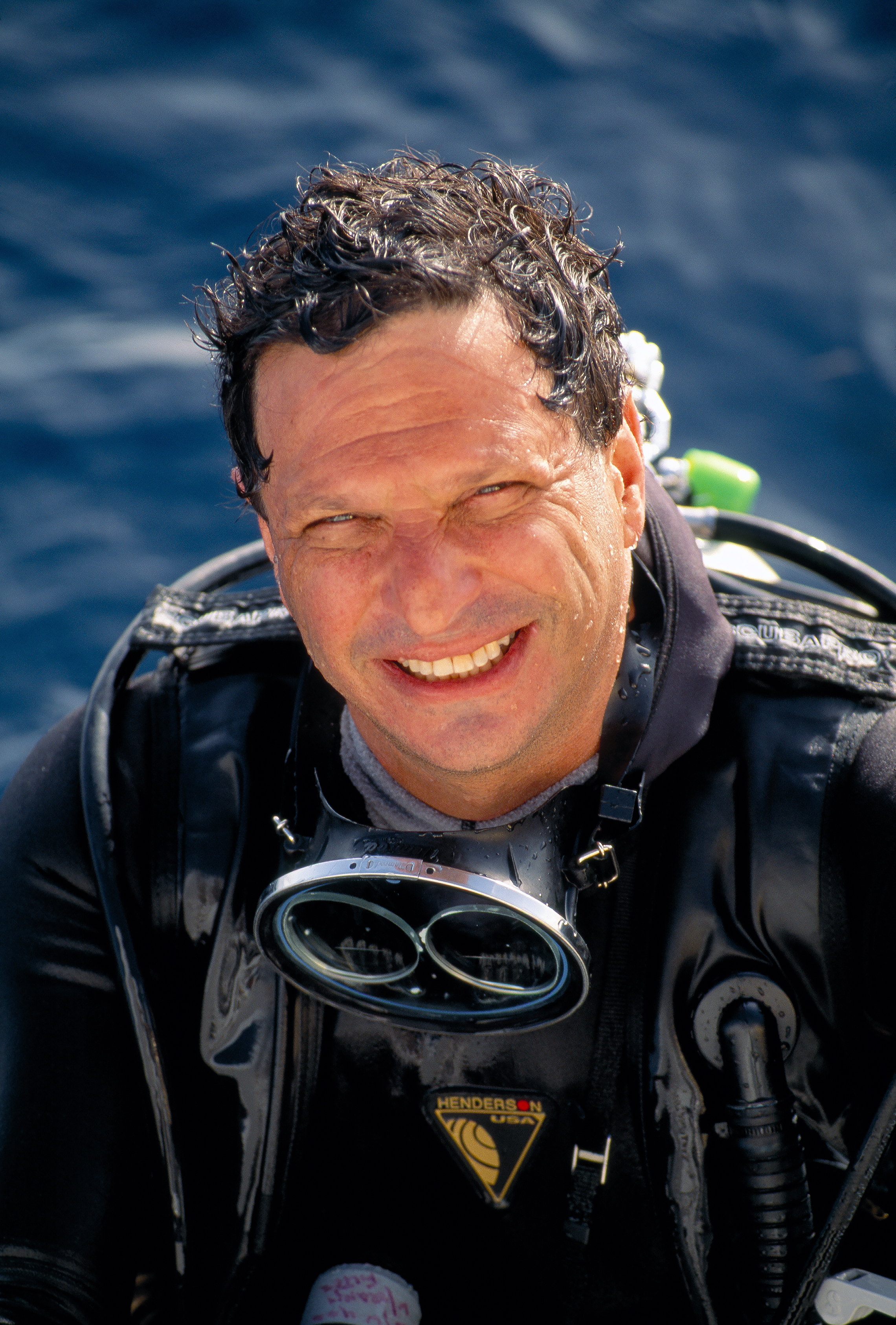
While shooting well over 70 stories for National Geographic, he has explored the world’s waters — east, west, north, and south. He has investigated the entire eastern coast of the United States, from the rocky coast of Maine to the islands of the Florida Keys; and the western coast, from California to deep in Canada’s Northwest Pacific. From his early adventures in the Bahamas, he has traveled the length and breadth of the Caribbean and chronicled the breathtaking biodiversity of the Galápagos Islands in the equatorial Pacific.
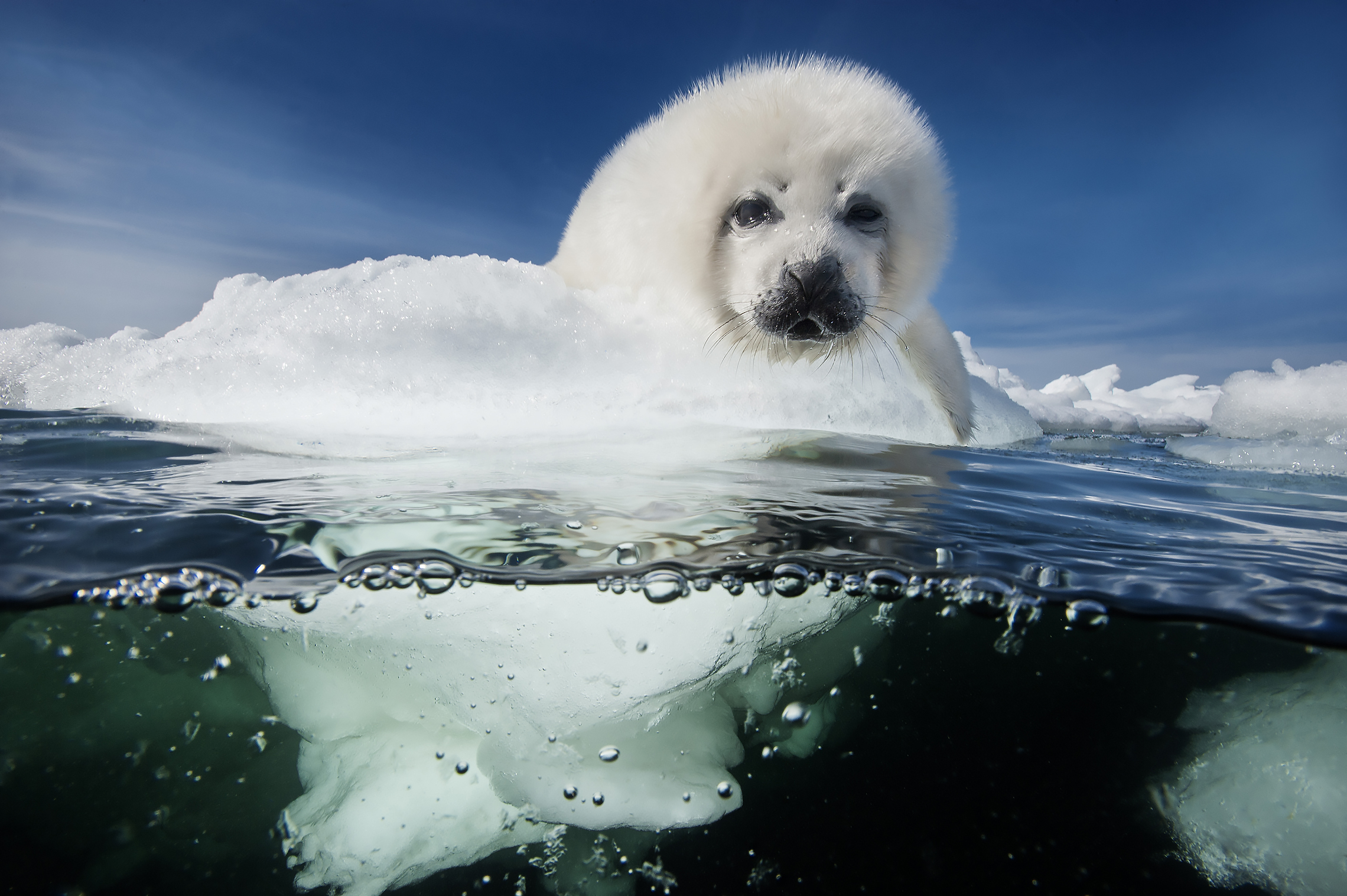
His adventures in the warm water zones have taken him to Indonesia, Micronesia, Australia, and New Guinea in the Pacific, as well as to Sri Lanka and the Seychelles in the Indian Ocean. He has also braved the cold waters of New Zealand, Tasmania, Japan, and Scotland — where he plumbed the depths of Loch Ness — and Antarctica, where he has recorded priceless images of penguins at play among the icebergs.
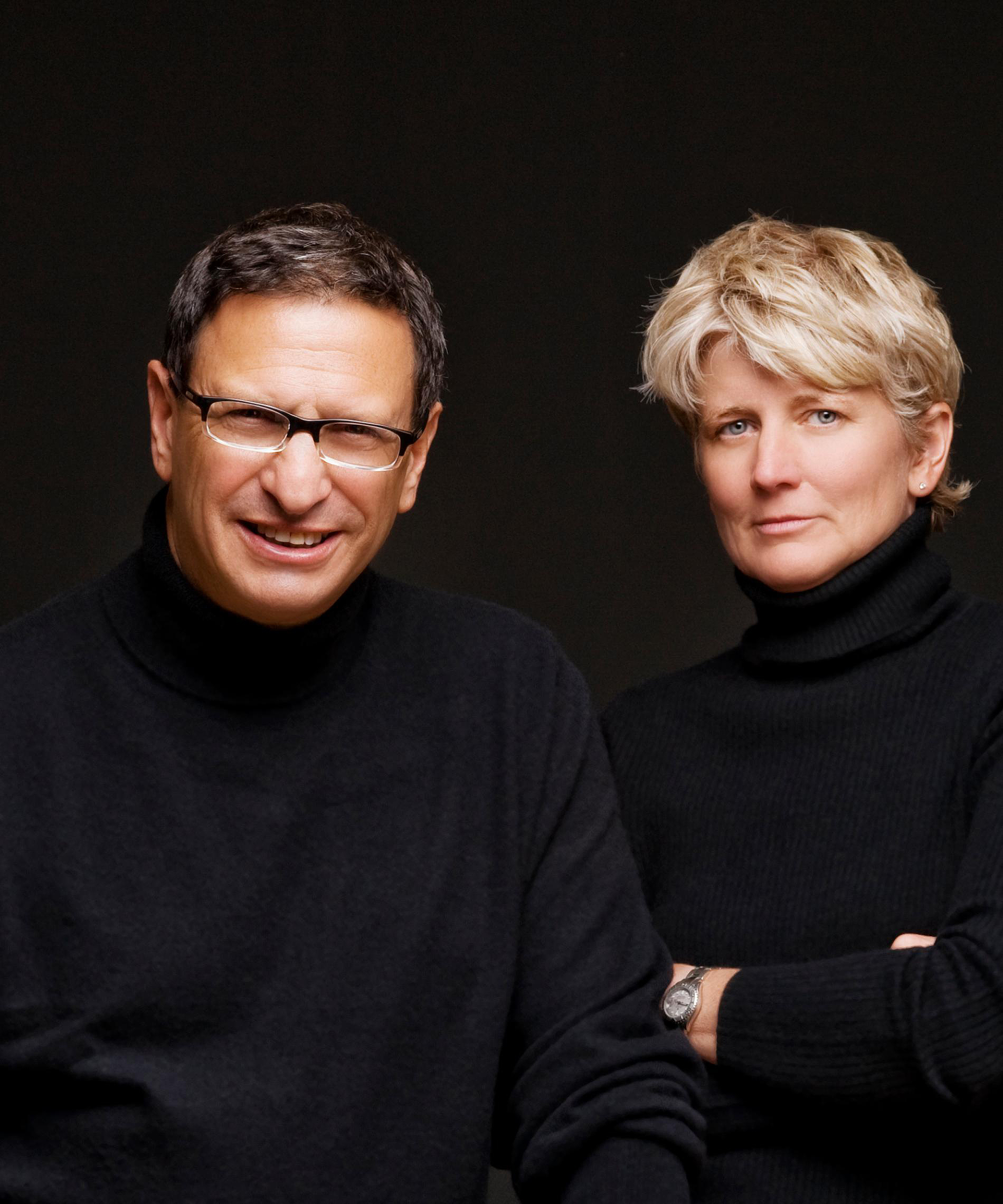
Besides photographing the living creatures of the world’s waters — crocodiles, alligators, stingrays, sharks, and barracuda — he has pursued his love of history, uncovering the wrecks of ships and planes at the ocean’s bottom, including the USS Arizona, in its resting place at the bottom of Pearl Harbor. Apart from his magazine work, he has shot advertising campaigns for Kodak, Seagrams, Microsoft, and Rolex, and served as the still photographer for the feature films The Deep and Splash.
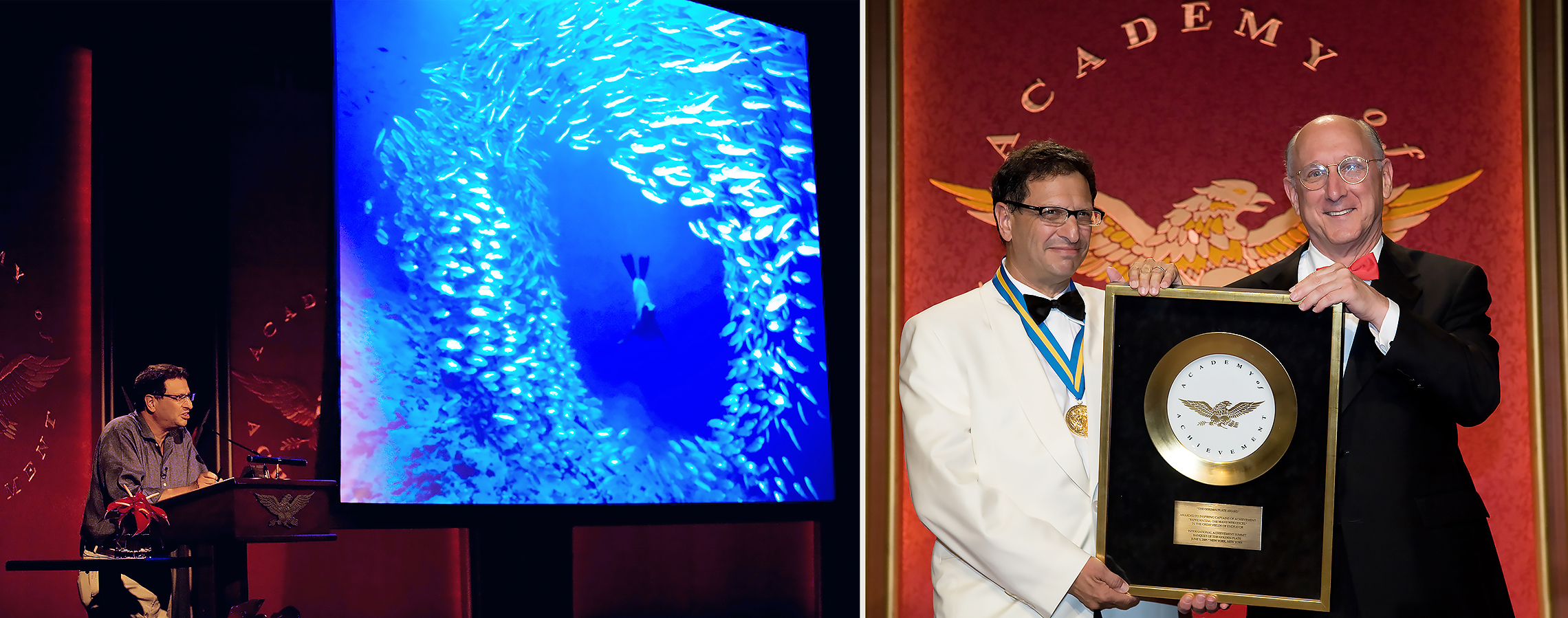
In 1989, Doubilet published his first book, Light in the Sea. A children’s book, Under the Sea from A to Z, with photographs by Doubilet, appeared in 1991. His book Pacific: An Undersea Journey was published in 1992. His subsequent books include Water Light Time; Great Barrier Reef; Fish Face; and Face to Face with Sharks.
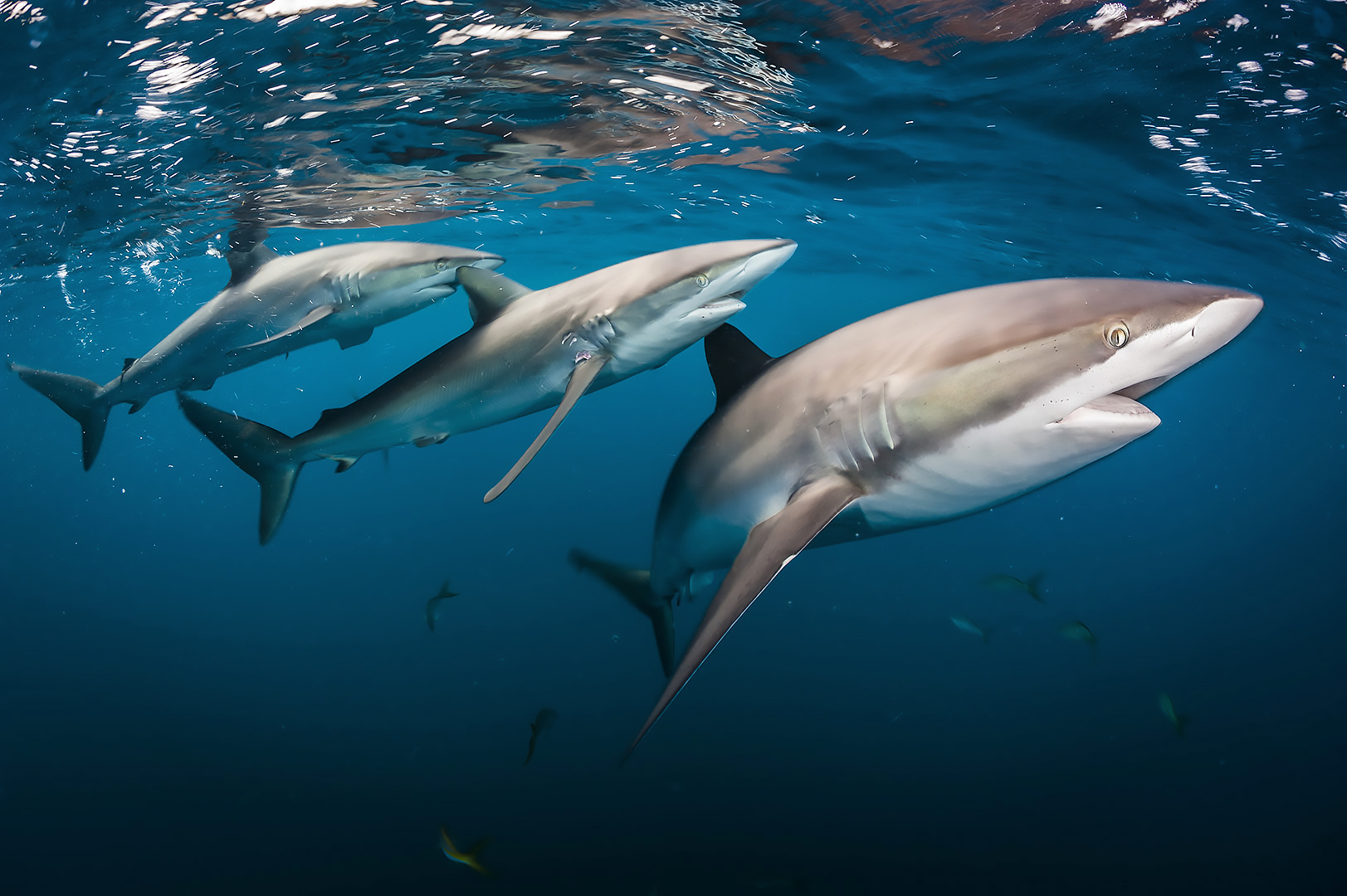
On all his travels, he is accompanied by his diving partner and fellow photographer, his wife, Jennifer Hayes. In addition to their saltwater adventures, their explorations of freshwater ecosystems have included studies of the Saint Lawrence River and Botswana’s Okavango Delta.

Jennifer Hayes grew up near the Saint Lawrence, which flows from the Great Lakes to the Atlantic, running between the Canadian provinces of Quebec and Ontario on its north bank and the State of New York on its south bank. The Saint Lawrence area has now become home for both of them. They keep one home in Clayton, New York, and another in De Kelders, South Africa, a coastal community east of Cape Town, where the Atlantic meets the Indian Ocean.

David Doubilet fell in love with the undersea world as a child. At age 12, he wrapped a Brownie camera in a plastic bag to take his first underwater pictures. In addition to contributing photographs and columns to a host of travel, nature, and diving magazines — including over 70 stories in National Geographic — he has published half a dozen books of his astonishing images.
Both inspired artist and fearless explorer, his expeditions have taken him around the world, capturing the amazing creatures, brilliant scenery and otherworldly light of the ocean’s depths. In reefs and caverns of fluorescent coral, he has recorded the most intense colors on the planet, as seen in his books, Water Light Time and The Kingdom of Coral: Australia’s Great Barrier Reef.
He has plumbed the mysterious depths of Loch Ness, Scotland and inspected the submerged remains of the USS Arizona at the bottom of Pearl Harbor. He has pioneered the use of the split-lens camera to take pictures at the waterline, keeping objects above and below the waves in focus simultaneously. When he is not on location, David Doubilet is a popular spokesman for the National Geographic Society, sharing his brilliant images to advocate for the conservation of what he has called “the most beautiful, most mysterious part of our planet.”
What is it like when you dive into the ocean and see some of the beautiful things you take pictures of?
David Doubilet: Well, you fall off the boat backwards. My partner — my wife, Jennifer Hayes — and I hold our masks, we roll backwards, and this is the way you get in the water. And when the bubbles clear and you see a shaft of light, and you can see reflections on the surface in clear water, you roll on your stomach. Even in cold water, you do the same thing in a dry suit. And you head down into the darker and more mystical part of the dive, into the rest of the dive, and you’ll see everything from large marine creatures — which they like to call megafauna; I don’t like that word — but it’s again, sharks or dolphins or even whales, manta rays, you may see those. Depending on where you dive, you might see the top of a reef, you might see a great school of fish. And in the last 20 years for us, and earlier for me — 49 years I’ve been working for National Geographic — you see this absolute parade of life. And it never, ever ceases to amaze us.
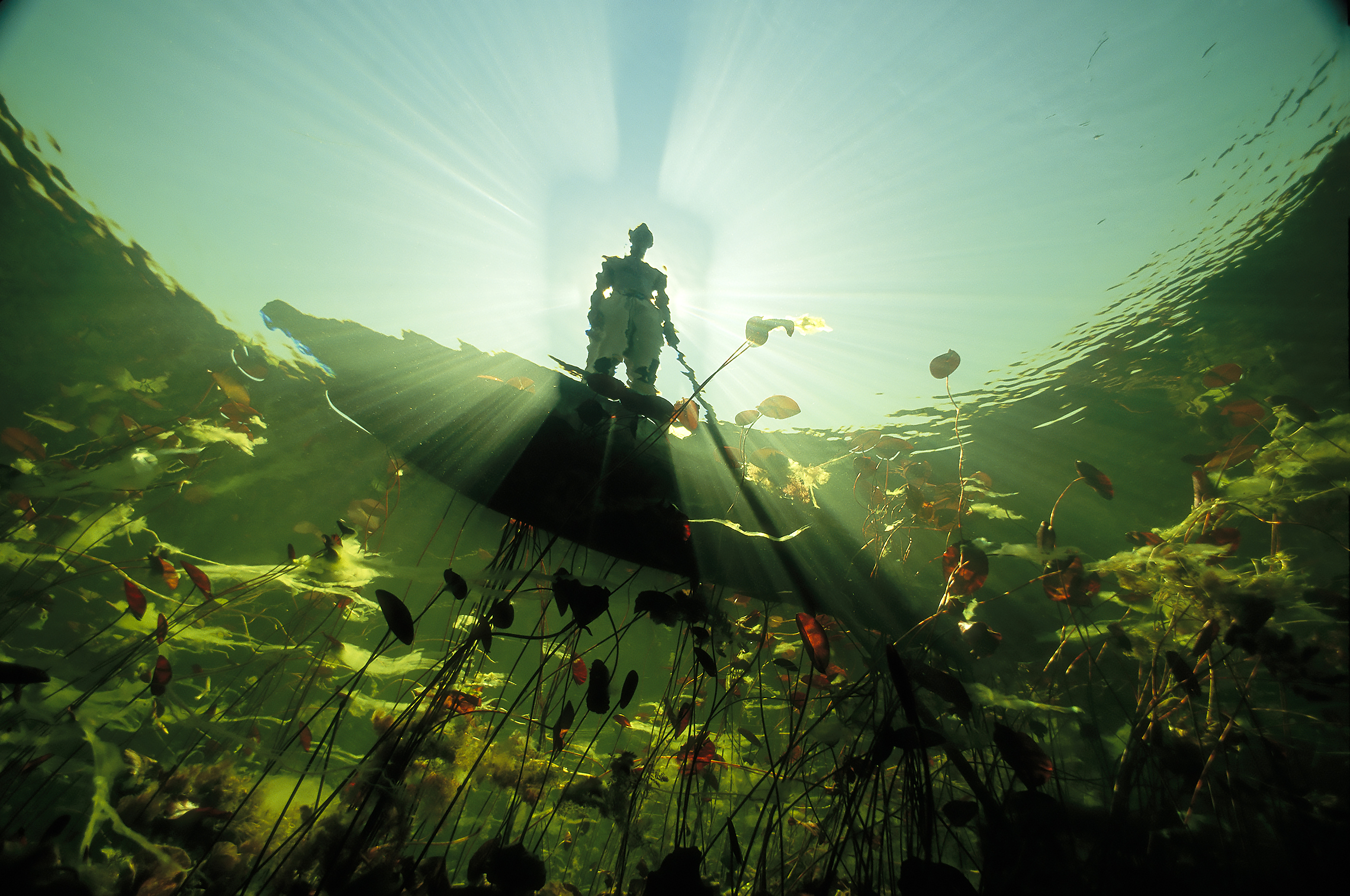
What are some of the discoveries you’ve made with your camera underwater?
David Doubilet: We’ve looked in a lot of different places underwater in this voyage of discovery. And remember, every time you fall backwards off the boat, it is a voyage of discovery. What we’ve seen are some incredible things. For instance, we went underwater, not in the ocean but in the Okavango Delta, one of the more incredible assignments we’ve ever had, because we were dealing with a rather large multicellular animal called a Nile crocodile, very large, and hippopotamus, and a host of other things in a world that was ultimately very strange.
We went under the mats of papyrus, which line their river bank in the upper reaches of the Okavango Delta. We dove in lily forests of pink and green and clouds of mosquito fish. We swam through tigerfish. We looked at diving spiders. We went at night to find something called a Zambezi squeaker, a very, very beautiful catfish. We looked at a system that fed all of the river. And they have a saying there that “the Okavango River is life, but beneath it is death.” And very few people have ever gone underneath there.
For a moment, as the floods come, it becomes very clear water. You just have a month in the northern part, and then you follow the clear water down to the ultimate end in the delta. Here is a river system that flows from Angola and then through Namibia, northern Namibia, and into Botswana, and spends itself in the sands of the Kalahari, producing this enormous delta, which in essence is the world’s largest oasis. It concentrates life, everything from these Zambezi squeaker catfish to hippopotamus to crocodiles to elephants to giraffes to lions to everything that lives in this world.
You must have had a lot of dangerous moments down there. Can you tell us about that?
David Doubilet: We dove at night. We would anchor over a lily forest and light up the lily forest with their big HMI movie lights. And it became something otherworldly. It became an exercise in a living Art Deco — or actually, living Art Nouveau — it was unbelievably beautiful. But at the end of the edge of the pool of light, you could see two eyes. The glowing — they glow like coals. Those are the eyes of the crocodiles. And if they’re this far apart, they’re small, but if they’re this far apart, they’re very large. This far apart is almost a foot wide. And as these eyes got closer and closer and closer, our guides, Andy and Brad Bestelink, would say, “David! Jennifer! Get out of the water! Get out now!” And I would say, “One more picture,” because I’d be looking around mesmerized.
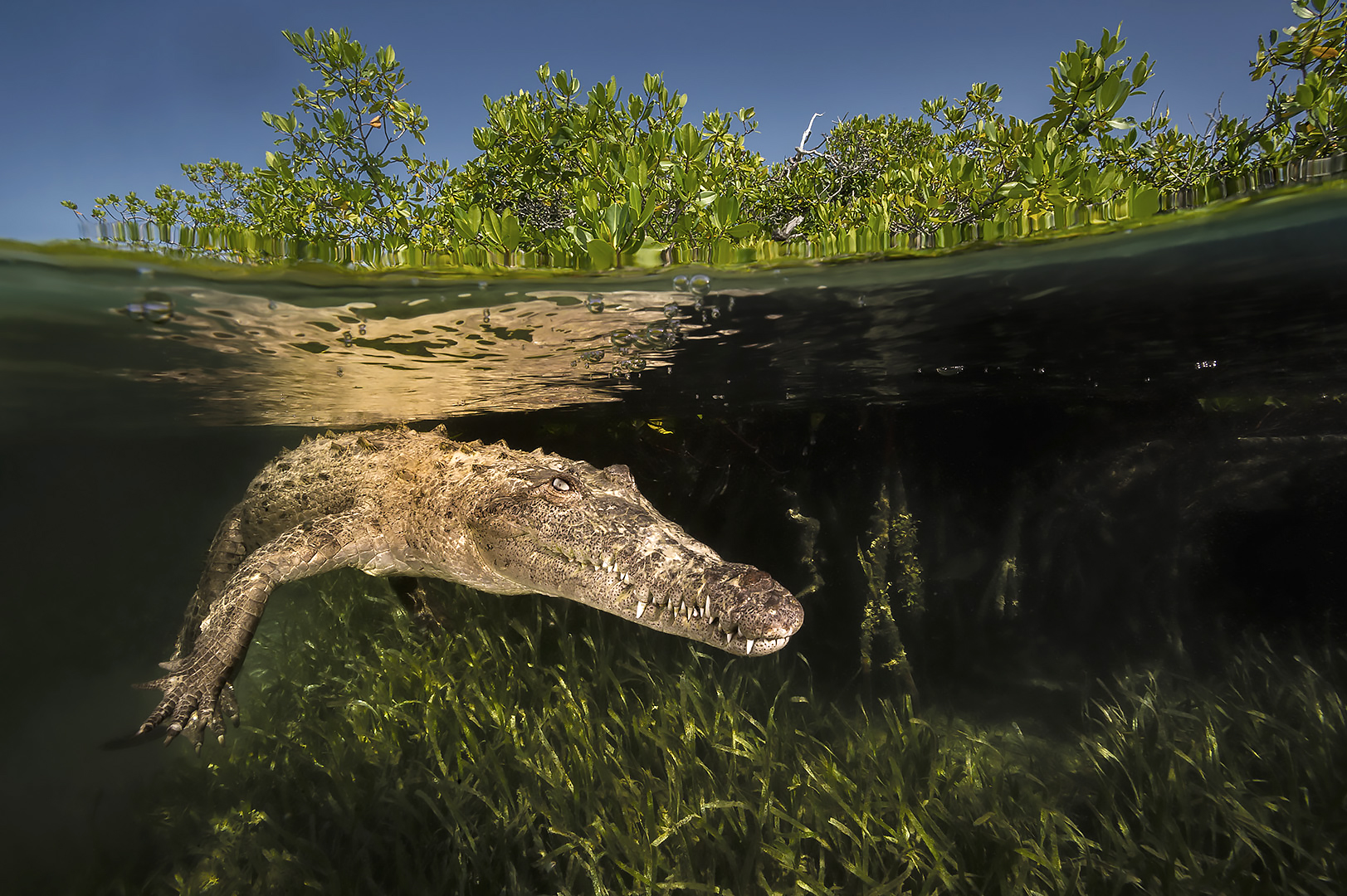
How do you communicate with the guides when you’re underwater?
David Doubilet: We were in very shallow water there. We were just snorkeling. So you can hear people for the most part. You can communicate and bang on the boat if something’s important, and you put your head up. The Okavango Delta is not deep. The deepest we dove in the month and two months and three months working there was 17 feet, but that was rare.
You’ve spent a lot of time with crocodiles and sharks. Have you ever been bitten?
David Doubilet: We’ve been very lucky. Never been bitten by a shark or never been bitten by a crocodile. What’s very funny is we spend a lot of time with sharks, everything from great white sharks to just recently, reef blacktips and great reef sharks and fakarava in an atoll in French Polynesia — one of the most astounding places we’ve been — in Cuba, in Australia. But crocodiles — crocodiles are really quite frightening because I think we’re used to being with an animal that’s in the water, but a crocodile is a dinosaur, unpredictable and extremely fast when it has to be, and yet has this idea of you’re swimming with dinosaurs.
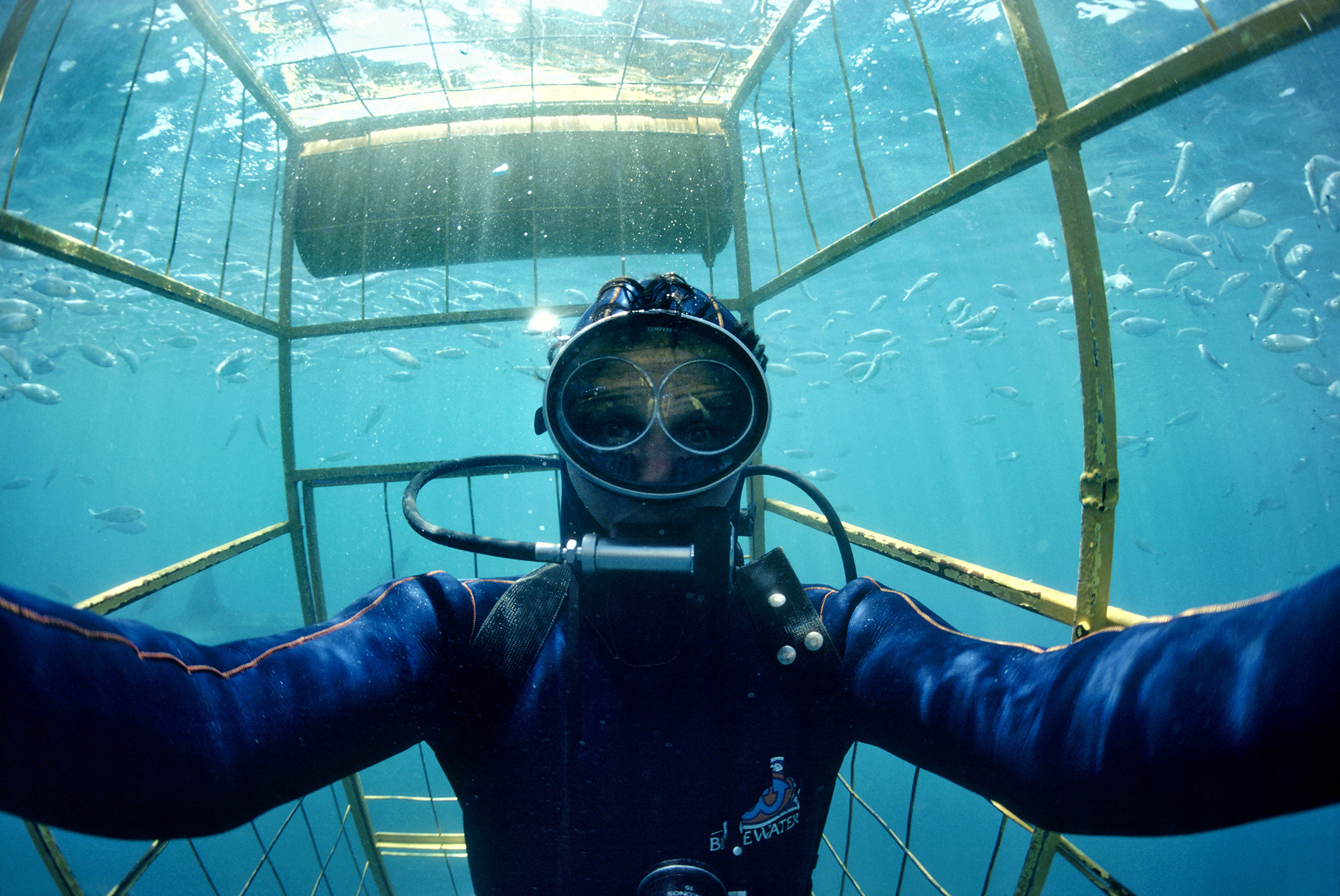
Light is so important to a photographer, but it’s so dark once you get deep underwater. How do you light up the ocean?
David Doubilet: Light is everything in the ocean. You’re right. And the first few feet of water, the color red disappears, and bit by bit, most of that end of the spectrum goes. So that by the time you’re at 60 feet, red is black. The color red is black. And strangely enough, if you cut yourself, you’d bleed green. Now if you take down a strobe, an electronic flash, that the inventor of the electronic flash, Dr. Harold Edgerton — who’s a teacher of mine when I was at university — said to me, “It’s like a bottle of sunlight.” And if you uncork that bottle of sunlight — in other words, push the trigger of the camera — the reef, or anywhere else underwater, explodes with light. And you see colors that have never really been seen before because they’re not colors of the surface. They’re colors beneath the sea, and they have an extraordinary palette: brilliant reds yellows, oranges. Colors you can’t even imagine.
David Doubilet: So every photographer has to supplement light. The light that falls down is the backdrop, dramatic shafts of light from the surface. And to that you add electronic flash, almost as if you’re swimming around with a studio. It takes that kind of approach. You are, in essence, trying to catch these creatures, and you have in your hand an underwater camera. We use these cameras called SEACAMs. They’re big underwater housings with large domes and two flashes that come out to here, sometimes three or four. You look a little bit like a spider crab, a giant spider crab, and you position these lights as you’re moving, as you’re swimming. So it’s basically being a studio photographer, running through someplace on land, running through a field and trying to catch that moment — that decisive moment.
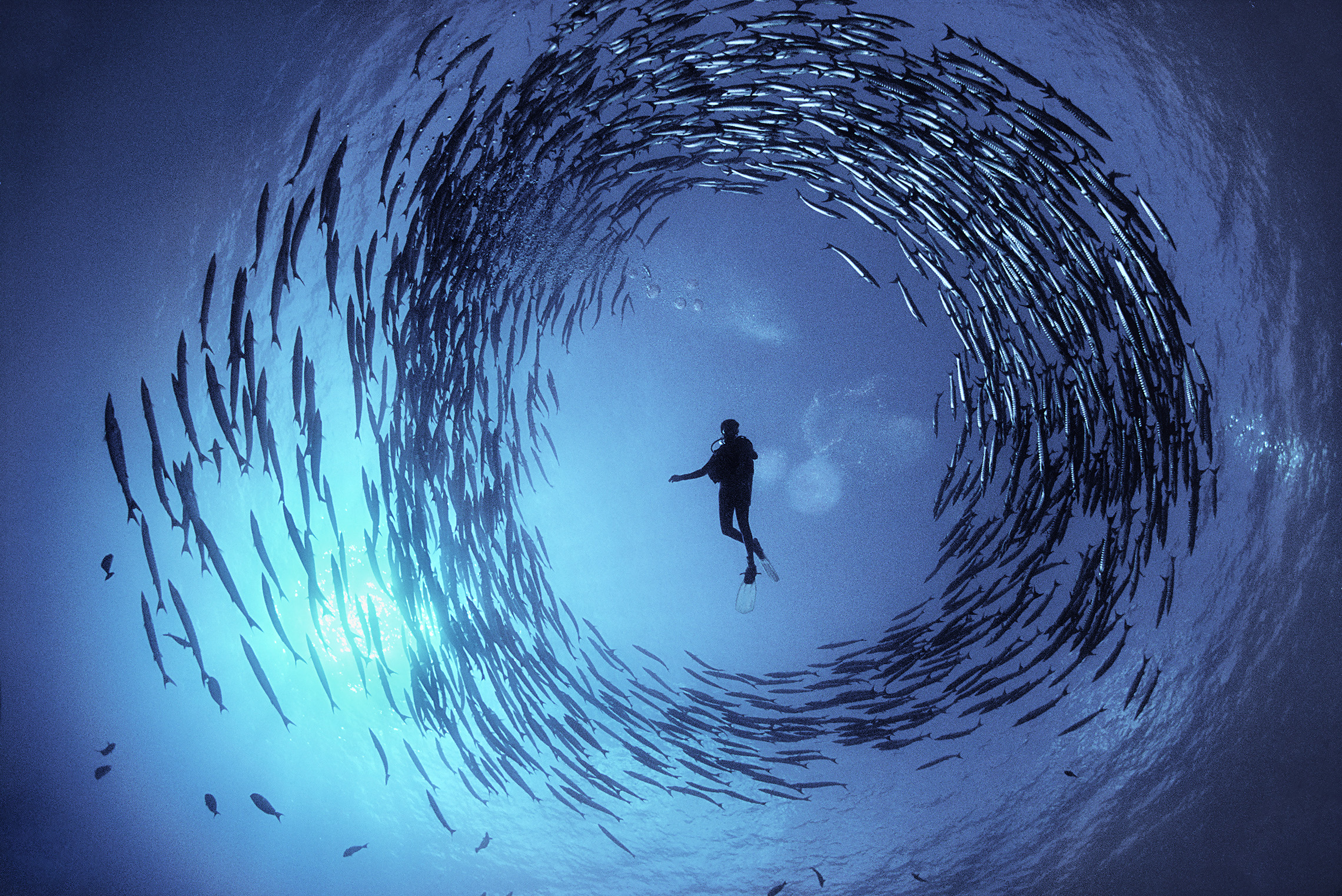
There’s this amazing picture where you caught a diver in the middle of a perfect circle of barracuda. How did you get that?
David Doubilet: There was a long reef, kind of a peninsula of a reef that stuck out 50, 60 feet down, near New Ireland in Papua New Guinea — very clear water. I swam over it. I was alone, and I swam over it, and I was instantly surrounded by this enormous school of chevron barracuda. And what these barracudas do is they do this wonderful thing, which is a defensive mechanism. They make a perfect circle, absolutely geometric perfect circle.
And geometry in the ocean is something that doesn’t exist in a weightless, cornerless world. There I was in the middle of this perfect circle, and I realized that I was in the middle of a picture that I wanted to take. It’s one of these things — it’s a terrible realization. So I swam back to the boat, and I talked to the captain. Her name was Dinah Halstead. I said, “Dinah, you got to come with me.” She and her husband, Bob, ran a boat called Toledo, and she jumped into the water in about two minutes, and we swam back to there. We swam side by side back to the barracudas, side by side. And as we got into this school — and they were still there, which is a wonderful thing — they began to circle again.
I crossed my fingers. I dove to the bottom. At about 45 feet, I rolled on my back, and I looked up. And Dinah was in the middle of the circle, and the afternoon sun was glinting against the sides of the barracudas, like a perfect silver wall. And then she did something amazing. Instinctively, she held out her hand, like a ballet dancer, like a pas de deux — or one half of a pas de deux — and the barracudas circled. They went three times around her, and then they disappeared. They broke up. They went into a single line and they swam off — off the edge of this blue peninsula of coral.
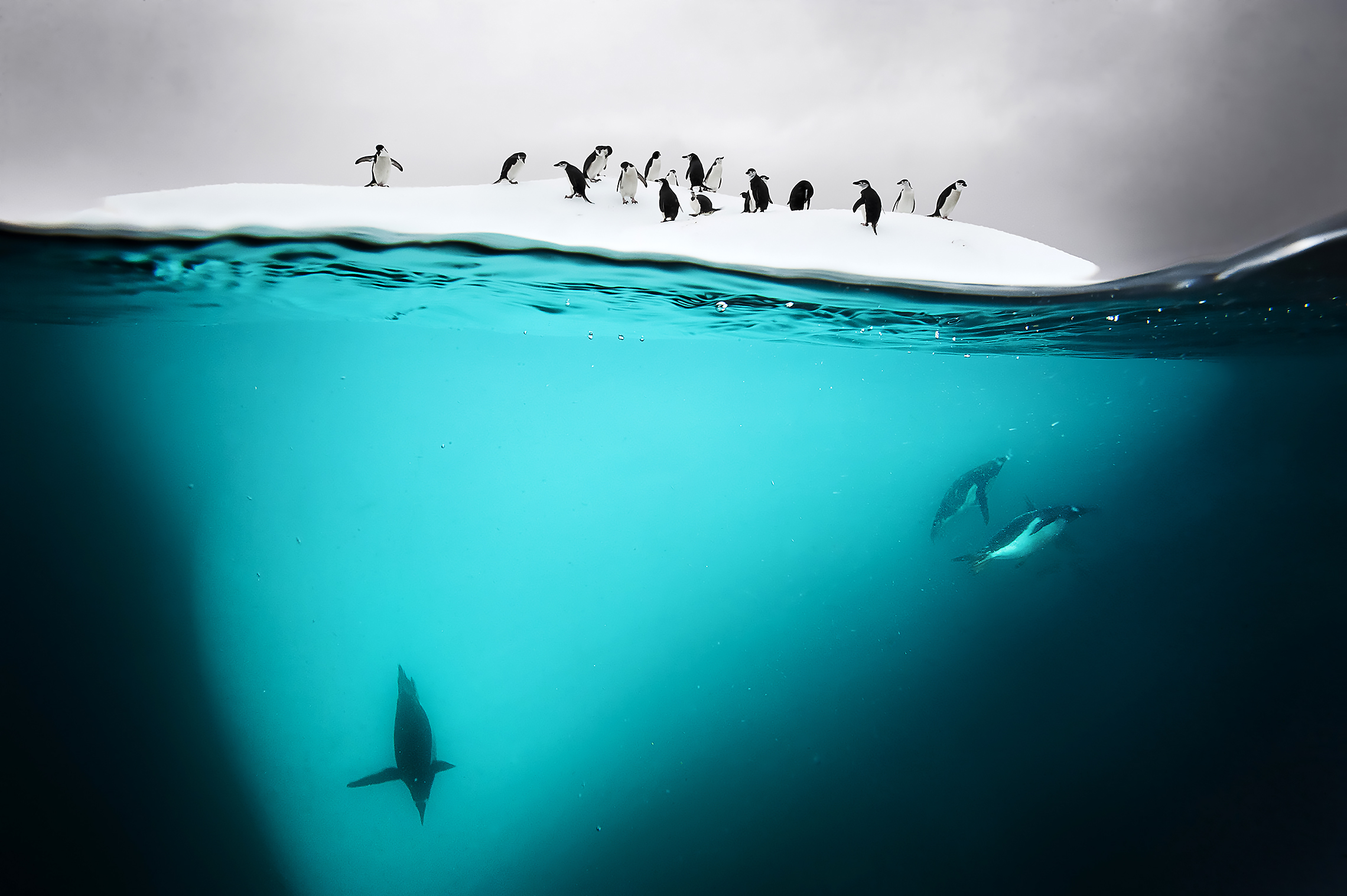
There’s another amazing image we want to talk to you about. In this one, penguins look like they’re on their own personal ice ship.
David Doubilet: We go down to Antarctica with National Geographic on the National Geographic Explorer as National Geographic photographers. One of the things we can do there is make pictures in the water, make pictures for ourselves, and also for all the guests — show them what this world looks like. We’ve been shooting these icebergs half-and-half — half-in, half-out images.
In a place called Danko Island on the Antarctic Peninsula, we found this perfect iceberg. Actually, it wasn’t an iceberg; it was something called a “bergy bit,” a mini-iceberg. And on top of it was a group of gentoo and chinstrap penguins. Jennifer and I swam around it and swam around it. The penguins were playing this game, and the game was called “King of the Iceberg.” They’re flapping their flippers at each other as penguins do. The gentoos are pushing the chinstraps, and the chinstraps are pushing the gentoos in. And they would push each other over the side of the iceberg. The penguins would dive down and they’d fly underwater.
That’s what they do — penguins fly underwater. They move really fast. How fast? Well, it’s like — if you’re at a party, and you blow up a balloon, and you release it, and it whips around the room, that is what a penguin is like underwater, leaving a stream of bubbles. Then they would pop up on the other side and the games begin again.
We were in the water for about an hour-and-a-half, getting colder and colder. And remember, the water in Antarctica is minus two degrees Celsius, or just about 29 degrees Fahrenheit. It’s really cold. And scuba diving — we’d dive for about an hour. When we were snorkeling, because we’re moving around a little bit more, we can last a little bit longer. But your ideas and images last a lot longer than your body does. And when your fingers begin to be completely numb, that’s when you really have to get out. Core temperature begins to drop. We just didn’t want to get out. Gray skies, white, white, white icebergs. Flash would go off, illuminating the bottom part of the iceberg, and the penguins were flying and eating little bits of krill underwater and popping up. I can’t wait to — you know, it’s one of those magic moments.
What’s the greatest underwater photo that you know about?
David Doubilet: The greatest underwater photo ever made is not an underwater photo. It was made by astronaut William Anders on Christmas Eve 1968 — one of the most terrible years in our history — but in one split second, one of the most momentous, important images ever made. He pointed his camera out of the little tiny window of Apollo 8 as it was coming around the dark side of the moon. And there in the foreground was the moon. Everybody’s seen this picture. And in the background is the earth rising, as it were, against the absolute black velvet of space. It’s not a blue marble, but it’s a sapphire. And this picture says one thing to all of us, every single human on the planet. It says, “That’s all there is.” But for me, and a few of my colleagues, like Dr. Sylvia Earle, it says, “This is a water planet.” She says. “This is not Planet Earth, this is Planet Ocean,” and it is 70 percent of its surface, and blue is the color of life found nowhere else in the universe.
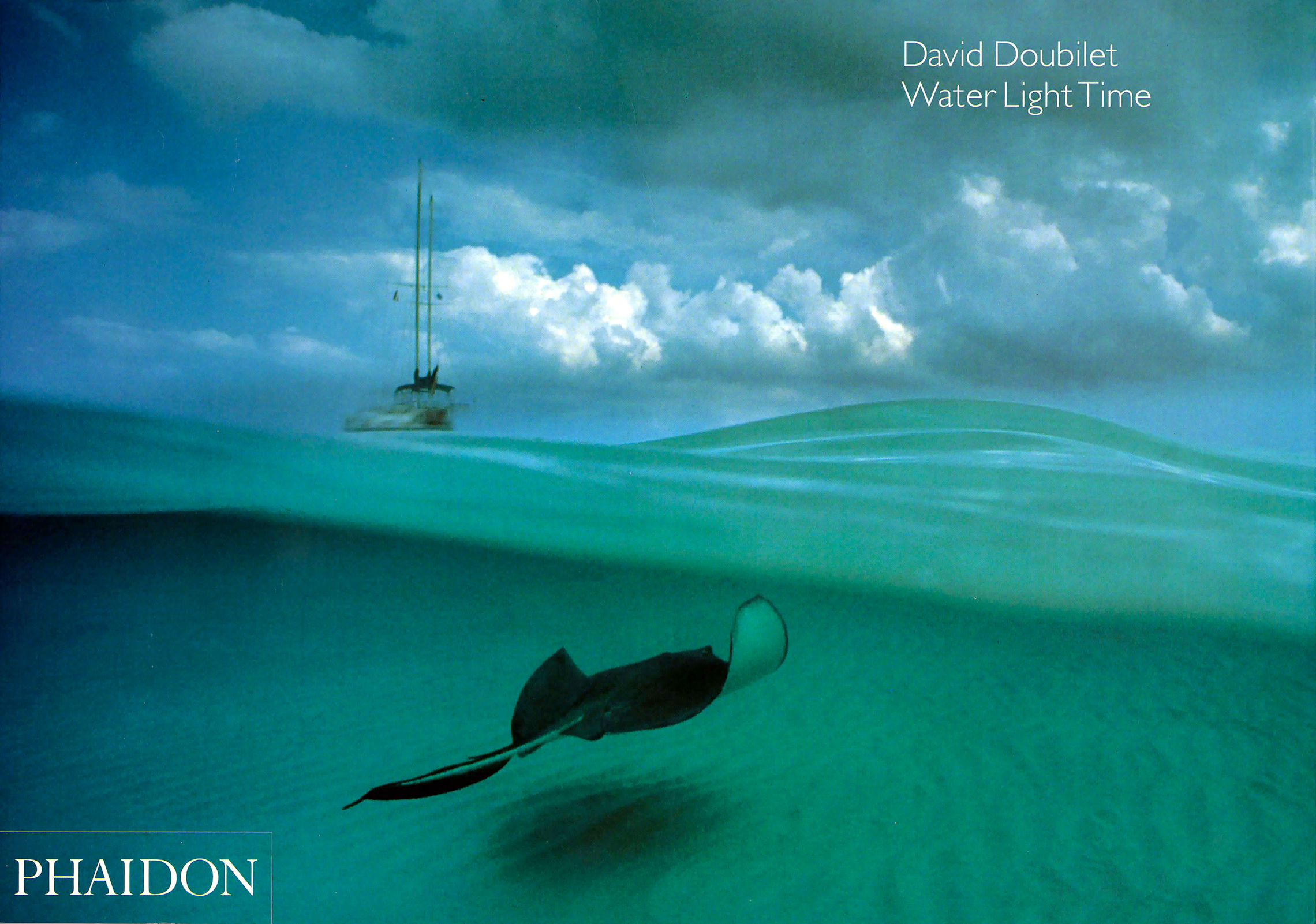
You’ve spent half of your life in the water. You travel from place to place carrying this heavy equipment. You get seasick in rough seas, to go swimming with sharks and crocodiles, or freeze in ice-cold water. You’ve already made your reputation. Why do you keep doing it?
David Doubilet: I want to see the rest of this world. I’ve always thought that the second greatest of all human attributes is curiosity. That’s what my father taught me, curiosity. I’m constantly curious about what is going on in this ocean. But there’s another thing, too.

What’s the first greatest, by the way?
David Doubilet: Kindness. Kindness. The other thing is what’s happening with our planet right now.
It gets back to that wonderful picture that William Anders took, “Earth Rise.” In that Christmas Eve of 1968, the population of the planet was about three-and-a-half million; now it’s almost seven-and-a-half million. Global climate change is a very, very real thing. We are working on a major project, part of a large grant from National Geographic to take a look at coral in peril — mission coral — throughout the world.
Coral reefs are the thermometer of our planet, the barometer of our planet. And they face enormous changes. Bathed in hot water right now, they bleach. The algae within the tissues of the coral leaves, the coral turns white, and in some cases, bleaches white and then dies. And reefs change.
Rising sea levels are affecting all of us throughout the world. They affect the coral reefs. Incredible storms are coming right now — bigger storms than have ever been recorded in living memory. And all this change is happening because global climate change is about water. It’s about rising temperatures and one more thing waiting in the wings — that’s ocean acidification. And ocean acidification is going to affect corals and a lot of other things within the ocean environment.
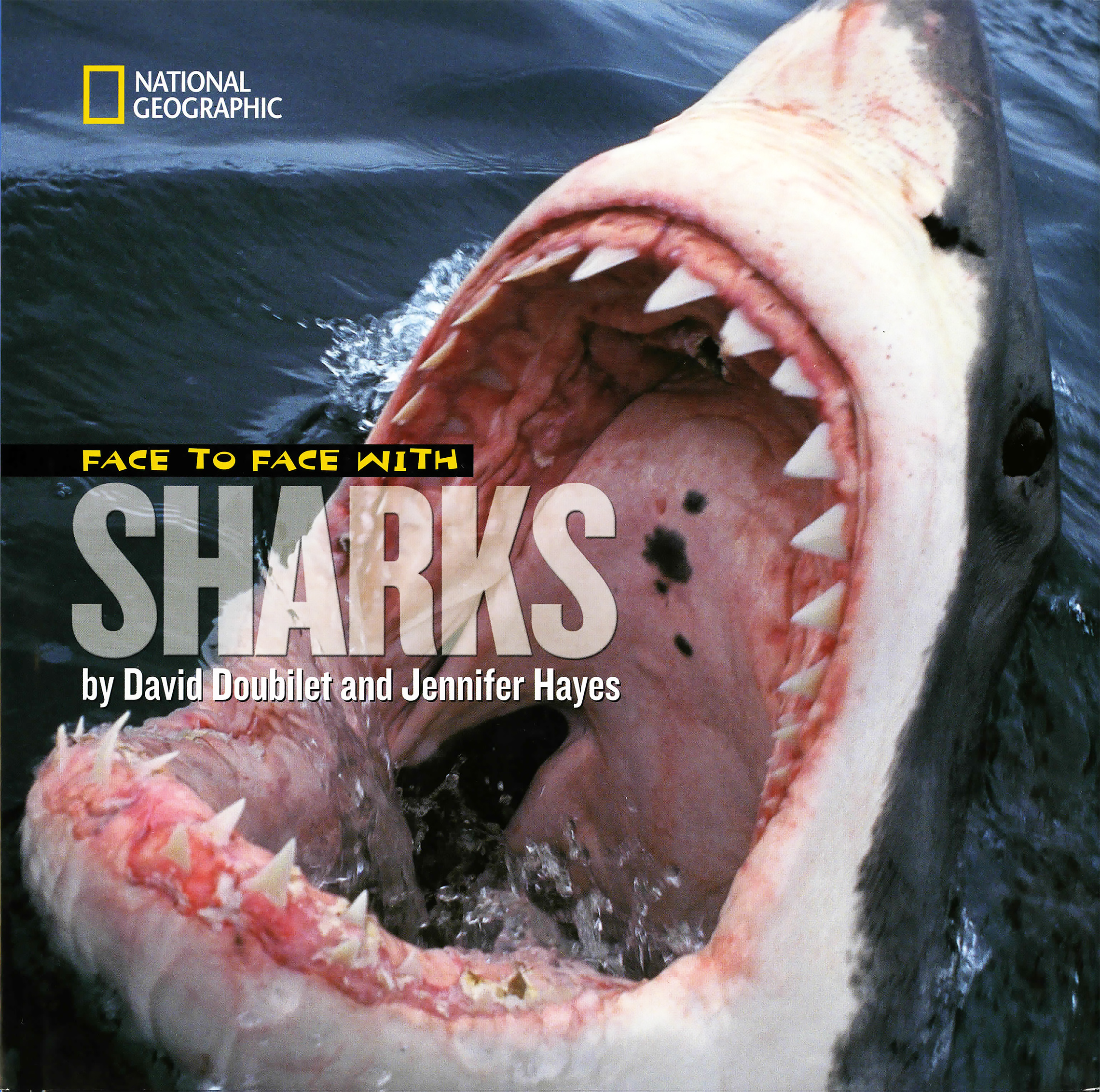
You see it all. How worried are you about the health of the oceans?
David Doubilet: Underwater, we are seeing the health of the ocean — the health of the planet — close up. We’ve been lucky enough, Jennifer and I, to see it from pole to coral reef. And we are seeing the changes right now. Coral reefs will change, not in the next century but in the next 20 or 30 years. They are the barometer of the planet. And this is what we are working on. We can only truly protect this planet — and this is what we’re learning right now — by reducing our carbon footprint. There is no doubt about it. These are the great sweeping changes that our planet is going through right now: overpopulation, rising temperatures, acidification. I would say this: you win a war by saying “second best today.” And if we can begin to cut down on our carbon footprint, which means that we switch more to solar, to wind, and for our automobiles, probably electricity, that’s going to change. If we have seven million people changing like that, we will reduce the carbon output. We will slow the change in our oceans.

